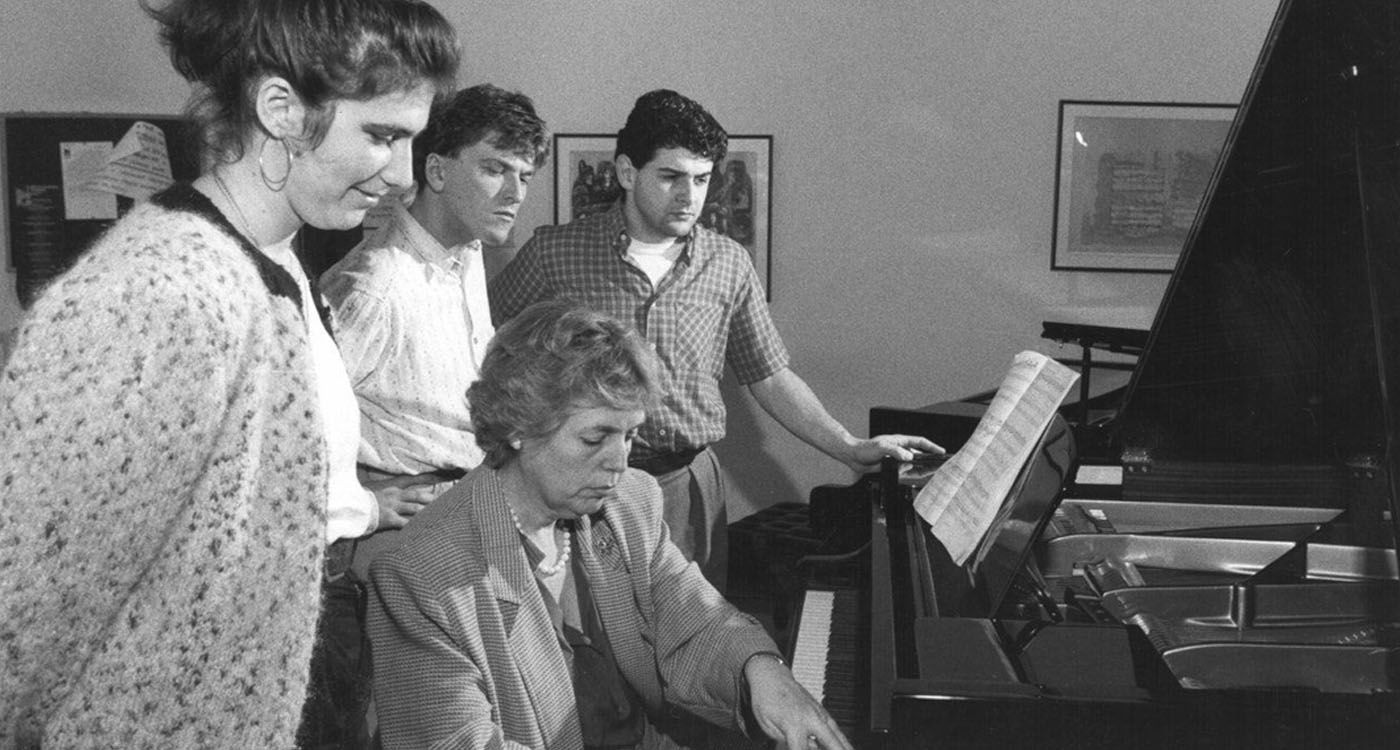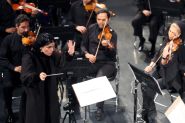
On February 10, Italy lost one of its greatest musical figures. Pianist Maria Tipo has now joined eternity. Like Arturo Benedetti Michelangeli, she left behind a belcanto pianism of great purity, blending majesty and delicacy. An inheritance now eternal.
That day, the room was bathed in a sacred silence. Maria Tipo sat at the piano for the last time. Her fragile fingers, still brimming with the passion that defined her career, brushed the keys with infinite tenderness, as if whispering a final melody in homage to the masters who guided her: Johann Sebastian Bach (1685-1750), Domenico Scarlatti (1685-1757), Ludwig van Beethoven (1770-1827), Frédéric Chopin (1810-1849). She breathed her soul into the Goldberg Variations one last time—now for eternity—an ineffable impulse that brought the music back to life in all its splendor. The last vibrations of the strings resonated in the hall, and then a heavy silence fell. The eternal moment. This silence, mournful and solemn, seemed both to escort the artist toward the supreme truth and seal the final act of a life entirely devoted to the piano. Maria Tipo passed away quietly at the age of 93, taking with her a part of the immortality of Western art music.
A Musical Destiny
Born in Naples on December 23, 1931, Maria Tipo took her first steps at the piano under the guidance of her mother, Esilia Cavallo, herself a former student of Ferruccio Busoni (1866-1924), a great master of Italian music. The family’s musical heritage quickly made its mark. From a young age, she developed brilliant technique and an innate sense of musical expression. Her genius came to light at 16, when she placed second in the prestigious Geneva International Competition, before securing first place the following year. This triumph marked the beginning of her international career. Her pianistic finesse earned her unanimous praise and comparisons to the greatest names in the history of the piano. For Arthur Rubinstein (1887-1982), she was “one of the most extraordinary talents of our time,” a judgment echoed by Martha Argerich, who described her as a “sensational artist.”
Expressive Power
At 25, Maria Tipo recorded Scarlatti's sonatas, a pivotal moment in her career, crowned by widespread admiration. The disc was immediately hailed as “the most spectacular of the year” by Newsweek, often cited as a model of how to interpret the Italian master’s music. Critics highlighted her remarkable agility and rhythmic precision, aligning her with the tradition of giants like Clara Haskil (1895-1960) and Vladimir Horowitz (1903-1989). This technical mastery, combined with profound sensitivity, made her a unique pianist capable of infusing her interpretations with fiery emotions.
Her approach to Johann Sebastian Bach's repertoire, especially the Goldberg Variations, is another highlight of her career. Sensitive to the immensity of the work of the Cantor of Leipzig, she stood out for the delicacy of her harmonic colors, her thoughtful counterpoint, and the finesse of her pedal technique. In 1960, she was the first to perform the complete Goldberg Variations in concert in Italy, an experience that deeply impacted the audience. Her 1986 recording, critically acclaimed, is often described as one of the most beautiful, praised for both the “splendor of the sound” and the intelligence of its execution. According to André Tubeuf, her architectural vision—distinct from Gould’s—combined with her bel canto-inspired rubato makes it one of the most personal interpretations of this monumental work.
Eloquence of Phrasing
From the 1950s onwards, Maria Tipo led an international career. She performed on the most prestigious stages worldwide, playing with renowned orchestras such as the Berlin Philharmonic, the Boston Symphony Orchestra, the Los Angeles Philharmonic, the London Symphony Orchestra, and many others. Each concert was an opportunity for her to further exalt her pianism, particularly highlighting a superlative flexibility and a poetic eloquence in phrasing, qualities that echoed Arturo Benedetti Michelangeli’s (1920-1995) style, yet remained distinctly her own. Her virtuosity was not only technical but also expressive. Whether in solo or chamber music, alongside the Amadeus Quartet, violinists Salvatore Accardo or Uto Ughi, she embodied the purity of the Italian piano tradition.
Humanist Approach
While her career as a concert pianist was prestigious, Maria Tipo went beyond being just a brilliant performer. She also devoted herself to teaching, passing on her knowledge and passion to young pianists around the world. From the 1960s, she took positions at the conservatories of Florence, Bolzano, and Geneva, where she trained a generation of pianists, including Nelson Goerner, Fabio Bidini, and Frank Lévy. Her impact as a pedagogue was as significant as her performing career. Her students particularly admired her rigor, her love of music, and her ability to awaken talents with a humanist and personal approach.
Maria Tipo traversed the world with immense dignity, offering music lovers performances of rare depth, that of a golden age—one that is almost no longer to be found. A figure of authority and a source of inspiration, she remains one of the most compelling exemplars of the elegance inherent in Italian pianism, an ability to harmoniously blend intellect and emotion, majesty and intimacy. Her living legacy is now carried by her recordings, her disciples, and by the memories of the fortunate few who had the privilege of crossing her path through her music. She undeniably leaves behind a vast void, a silence that will resonate for a long time in concert halls and in the minds of all who heard her.
Maria Tipo will forever remain a legendary figure among the greatest pianists of the 20th century. Modest in her greatness, she deserved to be called the “Neapolitan Horowitz,” a discreet but imperishable star, whose art continues to inspire beyond death.
Requiescat in pace.





Comments